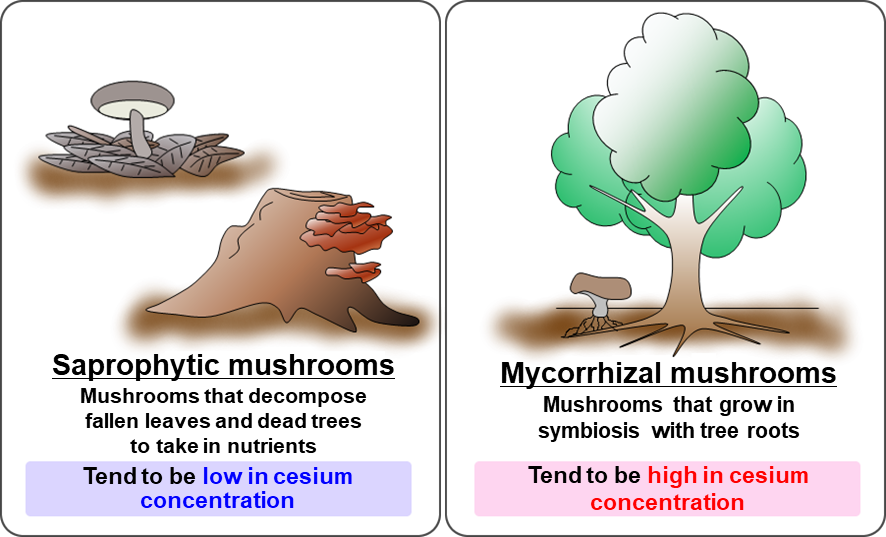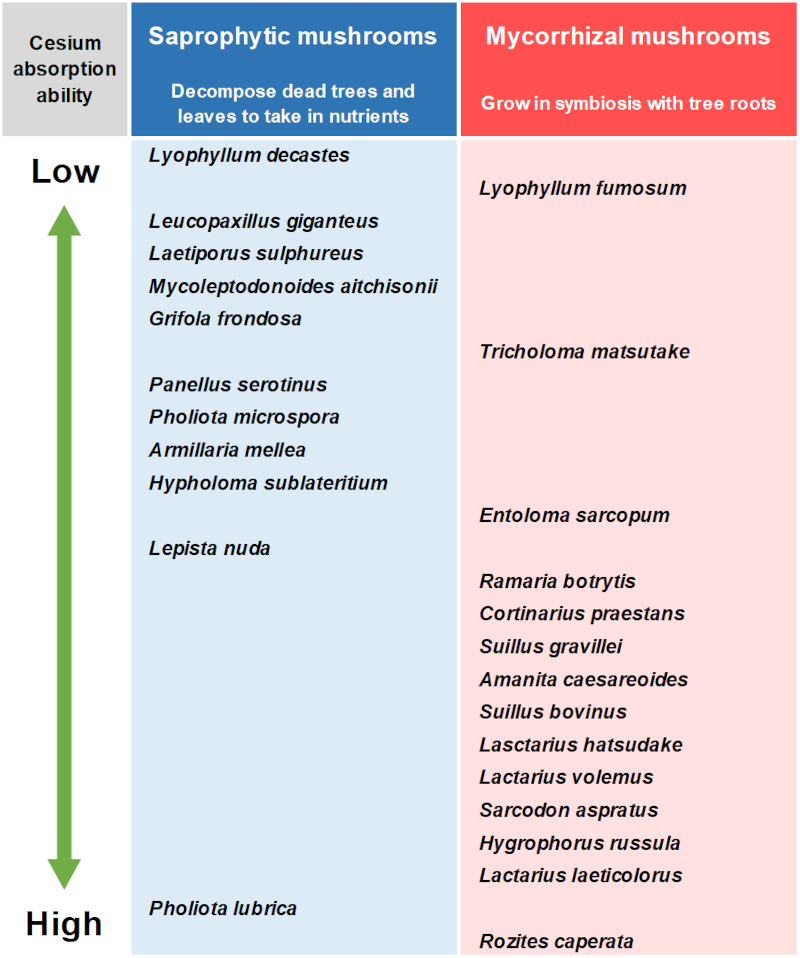Effects on Ecosystem
(2020)
QAre some species of wild mushrooms more prone to absorb cesium than others?
AAn analysis was performed on measurement data obtained from 3,189 samples of 107 mushroom species taken in 265 municipalities in 14 prefectures during the period from 2011 to 2017. The results show that wild mushrooms’ ability to absorb cesium varies by species.
Studies have revealed that cesium concentrations tend to be lower in saprophytic mushrooms (e.g., Lyophyllum decastes), which decompose fallen leaves and dead trees to take in nutrients, than mycorrhizal mushrooms (e.g., Sarcodon aspratus), which grow in symbiosis with tree roots.

Fig.1 Illustrations of saprophytic and mycorrhizal mushrooms
Studies have indicated that cesium concentrations in wild mushrooms are higher if the average cesium deposition is higher in their habitat. In addition, it is becoming clear that the ability to absorb cesium varies by mushroom species. Research is underway to predict the cesium concentration based on the mushroom habitat and species.
Table 1 Difference in the ability to absorb cesium by wild mushroom species

When the same level of environmental cesium concentration is assumed, mushroom species with a lower cesium absorption ability absorb less radioactive cesium than those with a higher cesium absorption ability.
(Research results from the Forestry and Forest Products Research Institute and others)
Related articles
- How have the radioactive Cs concentrations changed in wild animals in Fukushima prefecture?
- Are foods from Fukushima safe?
- I heard most of the forests would not be decontaminated. Does cesium remain in the forests?
- How do air dose rates in forests change with time?
- Is there a continuous input of cesium contamination to rivers from forests?
